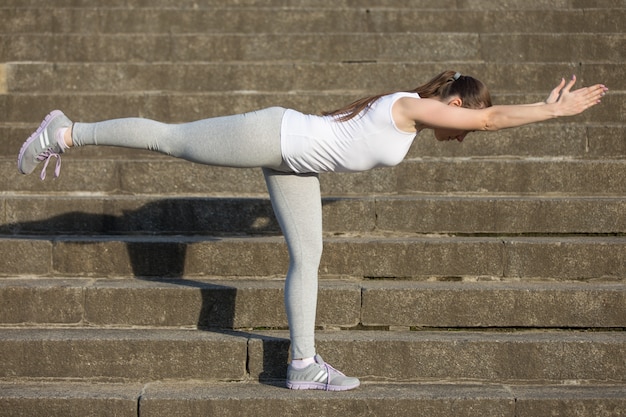Leg extensions, or knee extensions, are exercises that focus on the front thigh muscles, mainly the quadriceps. Typically done with a leg extension machine, they can also be performed using free weights. This guide will explore how to do leg extensions properly, their benefits and drawbacks, and common mistakes to avoid.
The Anatomy of Leg Extensions
Leg extensions are designed to strengthen the quadriceps, which include four key muscles:
1. Vastus lateralis, located on the outer thigh.
2. Rectus femoris, in the middle of the thigh, aiding both knee extension and hip flexion.
3. Vastus intermedius, situated under the rectus femoris.
4. Vastus medialis, on the inner thigh.
When you perform a leg extension, these muscles work together to straighten your knee. Although it primarily targets the quadriceps, the rectus femoris also contributes to hip flexion, adding a minor compound element to the exercise.
Leg extensions are often used as an isolated exercise, usually at the end of a leg workout to target the quadriceps specifically. They can help with muscle definition, strength gains, and hypertrophy in the quads, benefiting overall leg development and performance in various athletic activities.
Performing Leg Extensions Correctly
To perform leg extensions properly, adjust the machine as follows:
1. Set the seat so the back of your knee rests on the cushion.
2. Position the ankle block directly on the instep.
3. If available, adjust the backrest angle to affect the rectus femoris.
4. Use the range of motion (ROM) lever to find a comfortable position, especially if you have joint issues.
5. After selecting your weight, hold the stops on the sides of the seat or use the safety strap if available.
6. Inhale deeply, extend your knees while exhaling, keeping your back supported and your buttocks down.
7. Extend the knees fully without hyper-extending.
8. Lower the weight in a controlled manner, exhaling to avoid dropping it and stressing the joint.
Benefits of Leg Extensions
While leg extensions aren’t the best for maximizing strength, they are great for intensity when done with the correct form. They are particularly useful in pre-operative conditioning and rehabilitation programs because they offer controlled strengthening of the knee without excessive stress.
Some argue that leg extensions might stress the anterior cruciate ligament (ACL), but they are effective for knee joint health by isolating and strengthening the quadriceps, which supports knee stability.
It’s also important to focus on flexibility to prevent stiffness, which can restrict movement and lead to functional limitations.
Adjustments for Knee Health and Injury Management
If you have knee issues, use caution with leg extensions. Always consult a healthcare professional before incorporating them into your routine. Here are some adjustments for different conditions:
1. ACL Injury or Surgery:
– Use moderate weight and high repetitions.
– Limit ROM to the initial half (90掳 to 40掳) to avoid ACL stress.
2. Patellar Tendon Issues or Patellofemoral Pain:
– Similar to ACL adjustments with moderate load and high reps.
– Adhere to the first half of the movement (90掳 to 40掳) to reduce patella stress.
3. Meniscus Tear:
– Adjust ROM to avoid aggravating the injury.
– Limit movement to the latter half (60掳 to 15掳) to reduce meniscus load.
Common Mistakes to Avoid
To get the most out of leg extensions and avoid injuries, follow these tips:
1. Properly adjust the equipment to fit your body size.
2. Maintain a proper breathing rhythm; inhale during the easy phase and exhale during the effort phase.
3. Modify exercises if you have joint issues to prevent over-flexing or extending.
4. Control your movements to avoid dropping weights or using momentum, which can stress muscles and joints.
In conclusion, leg extensions are excellent for strengthening the quadriceps when done correctly. Understanding proper techniques and potential issues can help you maximize benefits while minimizing risks.







